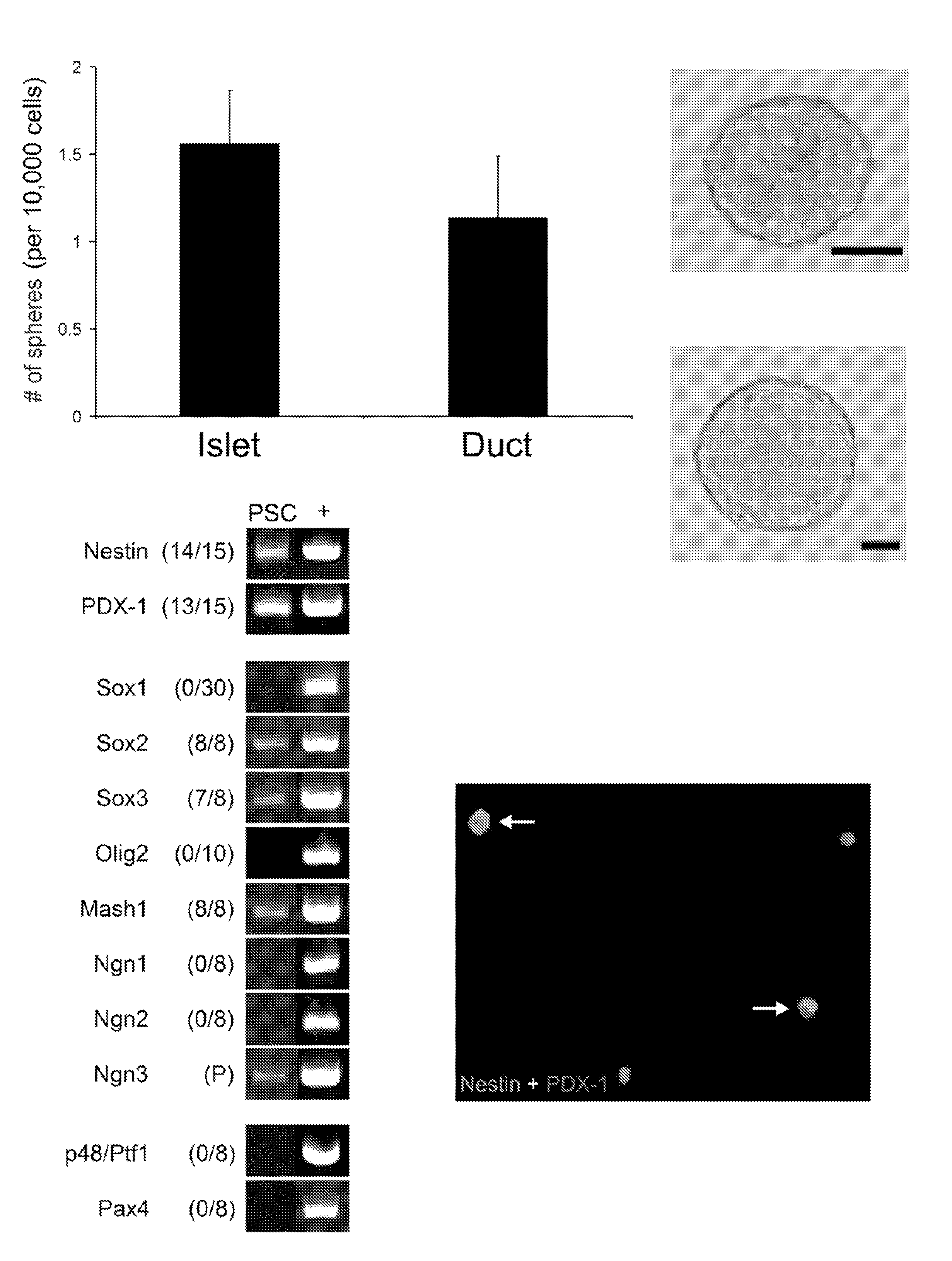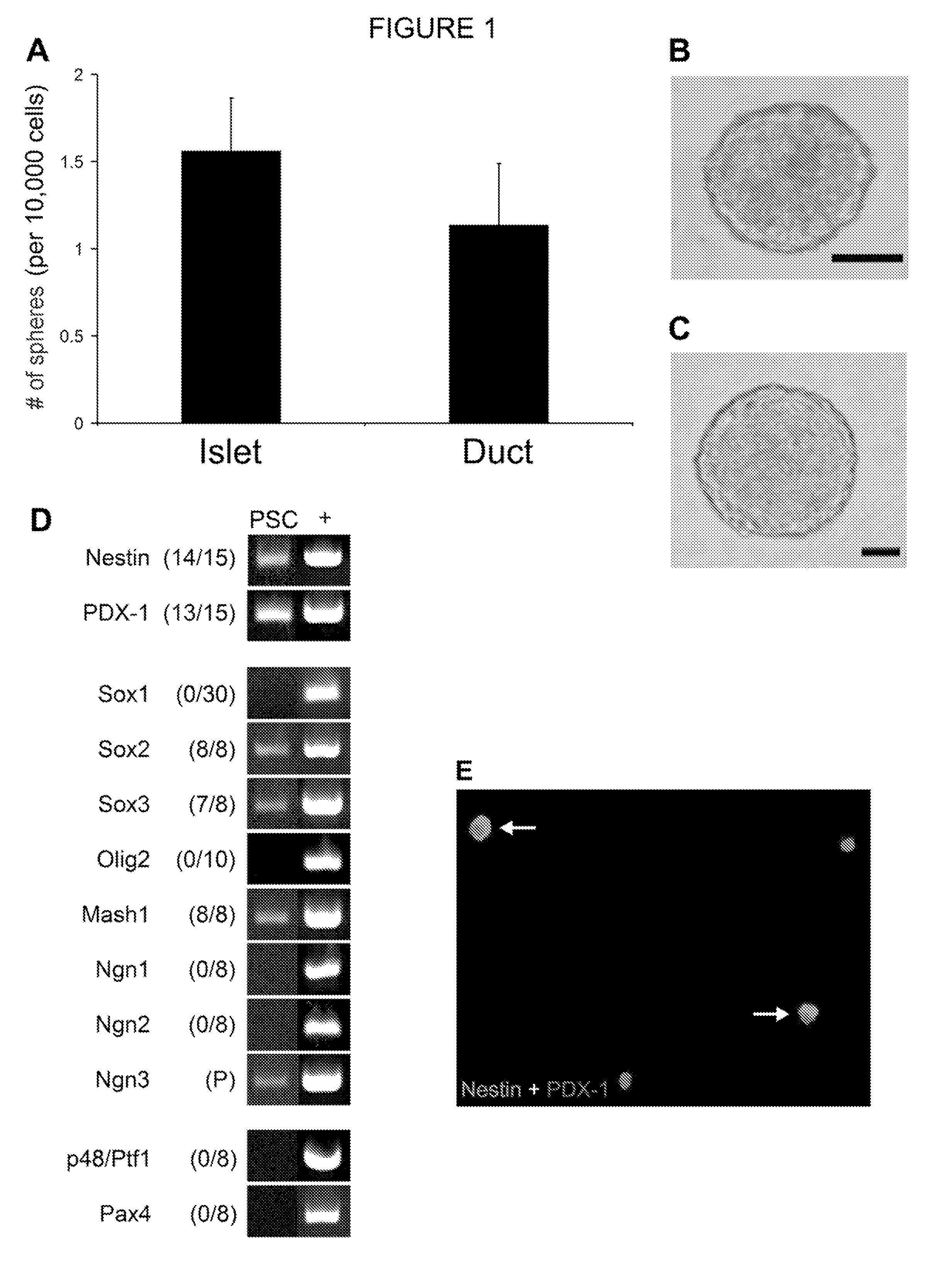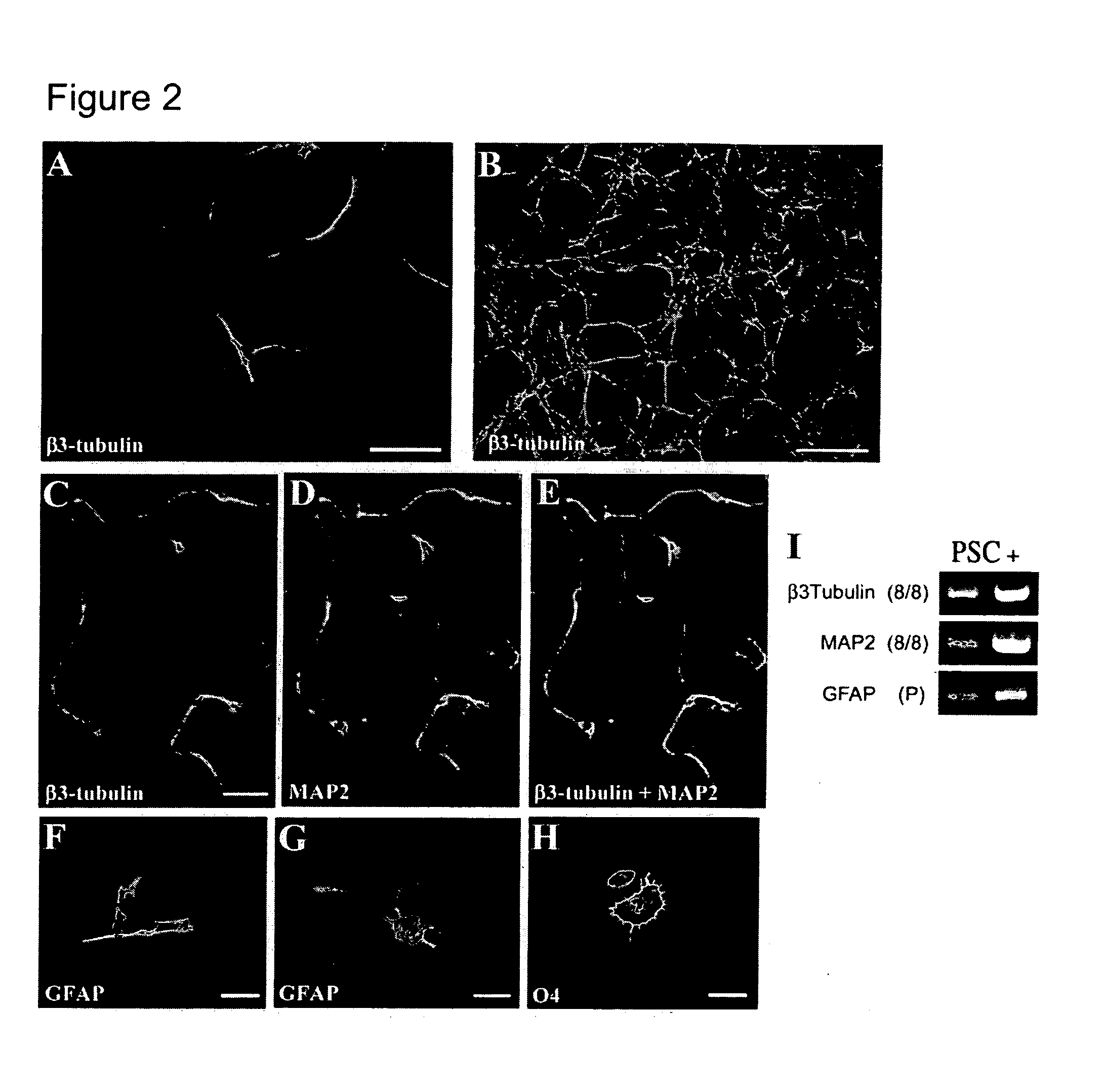Pancreatic stem cells
a pancreatic stem and stem cell technology, applied in the field of stem cells, can solve the problems of inability to reverse permanent damage to the pancreas, no reports to date of the clonal isolation and proliferation of single adult pancreatic precursor cells, and it is much more difficult to determine the direct effect of stem cells from indirect effects on other cells
- Summary
- Abstract
- Description
- Claims
- Application Information
AI Technical Summary
Benefits of technology
Problems solved by technology
Method used
Image
Examples
example 1
Pancreas Colonies Arise Clonally from Single Islet and Ductal Cells
[0103]To show cells isolated from adult pancreatic islets and ductal tissue would proliferate in vitro, we utilized defined serum-free media conditions that are typical for the isolation of brain-derived neural stem cells, but which have not been applied to cultures of pancreatic cells. In these conditions, neural stem cells clonally proliferate to form floating cell colonies called neurospheres6. Pancreatic islets and ductal tissue were separately dissociated into single cells and plated at low density in the serum-free medium containing epidermal growth factor (EGF) and fibroblast growth factor 2 (FGF2).
[0104]By 7 days in vitro, floating colonies which morphologically resembled neurospheres had formed in both islet and duct cultures (FIG. 1). There was no significant difference in the number of colonies formed from islet (1 / 6410 cells) and ductal (1 / 8850 cells) cells (p>0.05) (FIG. 1A). Indeed, throughout the follo...
example 2
Single Pancreas Colonies Express Both Neural and Pancreatic Precursor Markers
[0107]The pancreatic transcription factor PDX-1 is necessary for pancreatic development and is one of the earliest genes expressed in the developing 1213 and regenerating14 pancreas. Indeed, PDX-1+ cells generate both exocrine and endocrine compartments of the pancreas during development13. Other markers of pancreatic progenitors include p48 / Ptf1, Pax4, and Ngn315. Ngn3 is also expressed in neural precursors, as are Ngn1 and Ngn216, Nestin5, Sox1-317, Mash-118, and Olig219. To determine whether PSCs expressed markers more characteristic of neural or pancreatic precursors, RT-PCR analysis was performed on single colonies for PDX-1, p48 / Ptf1, Pax4, Ngn1-3, Nestin, Mash-1, Sox1-3, and Olig2. Nearly all PSC colonies tested expressed both nestin (14 / 15) and PDX-1 (13 / 15) (FIG. 1D; see also Supplementary Table I for comparison with neurospheres). As well, single cells from acutely dissociated PSC colonies co-expr...
example 3
Individual Pancreatic Progenitors Generate Multiple Neural Lineages
[0108]To show that PSC colonies would generate progeny characteristic of neural or pancreatic cell lineages, individual clonal PSC colonies were removed from mitogen-containing media, replated on an adherent substrate and allowed to differentiate for 7 days. PSC colonies from both islet and duct cultures generated β3-tubulin+ neurons, GFAP+ astrocytes and O4+ oligodendrocytes (FIG. 2A, F, G, H). These are the same cell types routinely generated by brain-derived neural stem cells when neurospheres are differentiated in this manner. However, under identical differentiation conditions, the PSC colonies generated very different proportions of these cell types compared to brain-derived neurospheres (Table I). For example, brain-derived neurospheres generate a much higher proportion of GFAP+ astrocytes (84.2±1.4%) than PSC colonies (7.4±1.3%), although neurospheres and PSC colonies generated similar numbers of O4+ oligoden...
PUM
| Property | Measurement | Unit |
|---|---|---|
| diameter | aaaaa | aaaaa |
| diameter | aaaaa | aaaaa |
| temperatures | aaaaa | aaaaa |
Abstract
Description
Claims
Application Information
 Login to View More
Login to View More - R&D
- Intellectual Property
- Life Sciences
- Materials
- Tech Scout
- Unparalleled Data Quality
- Higher Quality Content
- 60% Fewer Hallucinations
Browse by: Latest US Patents, China's latest patents, Technical Efficacy Thesaurus, Application Domain, Technology Topic, Popular Technical Reports.
© 2025 PatSnap. All rights reserved.Legal|Privacy policy|Modern Slavery Act Transparency Statement|Sitemap|About US| Contact US: help@patsnap.com



